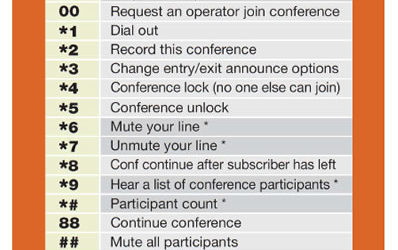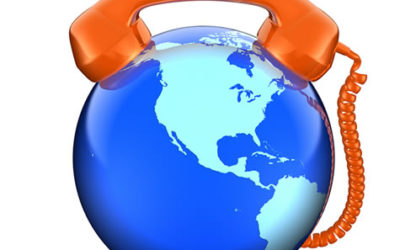Introductions
My name is Brad and I’m the President here at Adigo. I have experience in both public and private companies and I’ve been doing webinars for over a year now. I think they’re a lot of fun. Really, you have to make them fun because if you’re stressed out on perfecting each slide or your word choice, then that’s going to come across and it may not be as interesting for your participants. Definitely keep that in mind.
The Typical Scenario
I like to visualize my meetings. I think imagery is a wonderful tool, so every time I’m picturing all of you in this big auditorium, excited about my presentation and the content, and it’s just going to be such a successful conference because of that.
In reality, though, I know that probably there’s a bunch of you that thought this was a different conference and webinar, and some of you may have been asked to attend by someone else in the organization. 63 percent of participants will multitask and, a bunch of participants tend to have lunch at the same time. Clearly, there is some distraction going on, but not a problem, not a problem at all.
Data Benchmarks
For those that like that kind of data, I’ve some other interesting factoids for you. If you get concerned about, “Gosh I’ve got a good RSVP list but not that many actually show up” keep in mind that actually industry average only a third. If you’re even getting close to half of the people that sign up actually showing up that’s terrific. That’s actually fantastic.
Another interesting statistic I think is that clearly with virtual webinars you don’t have to have as much planning. You can do these things much more quickly and a sweet spot though is really about 2 weeks. What we find, or what the industry has found, is that registration you’ll get about a third more if you start the process 2 weeks out rather than just on a 1-week ahead basis and then on the other end of the spectrum it’s also important to. With your promotion, go ahead and continue that not only on the day prior but the day of the event. You’ll typically see 20-30% additional conversion if you send out a reminder and an additional invitation then.
Result
What’s the problem? Why are so many of us interested in this topic? That’s because, quite frankly, many webinars are just boring. That may have nothing to do with what the content is.
People are having trouble getting in perhaps. That didn’t happen on this one because it was so easy for you, but people have trouble getting in, they’re coming in with an attitude. They may or may not be interested in the topic. We’ve got some webinars where the delivery is so darn fast, especially if it’s a training type of webinar, and people can’t keep up.
On the opposite side of the extreme, you got some people that just are talking so slowly or not changing any inflection and it can just be a horrible experience. Hopefully this doesn’t happen too much, but quite frankly, some people think it’s happening even more so. I’ve been on webinars where the audio is so crappy that you can’t even understand what the speaker is even saying.
Better interactions
What can we do about it though? Let’s get on to business, and, “How can we improve things?” Well first of all, I think just because it’s a virtual webinar, your mindset should actually be that it’s live. Everything that you would do if you were in a live auditorium with folks is really similar to what you’d want to do in a virtual sense. That means engaging the audience and having an interactive discussion. Well how do you do that?
First of all, ask three or four questions to get input from participants via the chat. It’s a great way to get feedback. It’s a real simple way to do it, and you should use the embedded chat with whatever web conferencing tool you’re using, because that’s going to keep their attention on the slides and not be distracting by going back and forth, even for you or for them.
Secondly, polling. Most tools include a chat that can be used as a polling mechanism. For example, I can say, “Hey, on this list, on the slide showing, give me a chat with the number 1 through 5, tell me what you think is the best one or most important to include in your webinar.”
Many people like to include multimedia. Moving forward, that’s something we’re seeing more and more often. It could be either a video clip or an mp3, and many tools have that as well now. If you’re doing a training webinar, Q&A is a neat way to make sure your audience is sticking with you, and so that would be something to include.
On larger webinars that are more consumer-oriented Twitter or other social mechanisms to engage with your audience in real-time while things are going on. You can have a Twitter feed up on a screen. Not used as much in the business sense, but there’s five ideas right there.
I’ve got a daughter in middle school and even at that level they’re doing the Socratic method, which, as you may know, literally puts people right on the spot. You can ask people, “Hey, Peggy, I’d like to know what your thoughts are on this slide. Please send me a chat.” That helps keep people engaged for internal webinars.
It might be appropriate to do a live brainstorming, and that’s another neat way to get participation. You can have a virtual whiteboard where you’re, in a live manner, collecting information, or you can just use a Google document. It’s not that difficult to do that sort of thing now. If you like to have data on the participation, there are tools that we offer and many others do that now track that type of engagement. If that’s important, feel free to have that. You can do it.
I think HubSpot has done a great job internally with training videos in terms of their presentation. If you want to see some good ideas, then check those out. Clearly, not every single one is perfect, but I think in general they do a real nice job on delivery and incorporating different types of engagement.
Control Your Content
One thing that is definitely important is to limit the text. We all have a horror story where on a training video or a webinar, sometimes even a sales webinar, the presenters are trying to convey a tremendous amount of information on just one slide. It’s oftentimes overwhelming to the viewer. You need to be very cautious about slide length and the amount of information you’re trying to convey in a single slide, otherwise, you risk losing your audience. You’re not adding any value. It’s counterintuitive, the more information you add to that slide, the less your audience retains. Like I mentioned earlier, that’s why telling stories is so important. Stories are more engaging, more memorable, and easier to digest than a wall of text or data or graphs. People much prefer hearing about concepts and information and insights within the context of real life examples. That’s what a story is all about.
Next, I’d like to talk about images. It’s so easy to drag and drop loads of images onto a presentation or webinar; a convenient shortcut or simplified way of trying to convey something. However, despite the technical ease, people still get intimidated by the process of finding the right image. They may think, “Gosh, if the marketing department hasn’t done it or improved it, I don’t know what to do.” What they don’t know is that there are a variety of tools out there that have made the process effortless. You basically go to Google, type in “image” in front of whatever it is you want to find, and Google presents you with a slew of pictures that you can use. That easy. You may notice that the word “image” will be highlighted, and that’s how you know within Google that they are searching their image content. Most of the pictures available can be used freely for non-commercial purposes, and there are additional filters built into the image search that’ll allow you to request only Creative Commons images, or images that can be used for a variety of personal and commercial purposes. All of these are free and it’s an excellent mechanism for adding visual content. The best part, you don’t need the help of your marketing department, you don’t need a fully decked out, high production presentation.





0 Comments